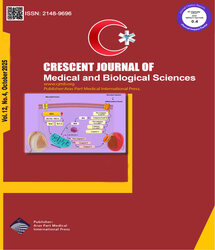
| Original Article | |
| Prevalence, Risk Factors, and Clinical Findings of Candidiasis and Trichomoniasis in Women Supported by Selected Health Centers of Tabriz, Iran | |
| Fahimeh Sehhatie-Shafaie1, Asiyeh Namazi2 | |
| 1Department of Midwifery, Faculty of Nursing and Midwifery, Tabriz University of Medical Sciences, Tabriz, Iran 2Tonekabon Branch, Islamic Azad University, Sari, Iran |
|
|
CJMB 2014; 1: 130-135 Viewed : 4578 times Downloaded : 3580 times. Keywords : Candidiasis, Prevalence, Risk factors, Trichomoniasis |
|
| Full Text(PDF) | Related Articles | |
| Abstract | |
Objective: Vulvovaginitis candidiasis and trichomoniasis constitute at least 50% of infectious vaginitis
cases. The aim of this study was to determine the prevalence, risk factors, and clinical findings of
candidiasis and trichomoniasis in women supported by selected health centers of Tabriz, Iran. Materials and Methods: This was a cross-sectional study, in which 1000 women who had the study criteria were selected by random sampling. In addition, 12 health centers of Tabriz were selected for this study. A questionnaire was used to obtain their personal and reproductive information, checklist for clinical observations, and culture methods (sabouraud dextrose agar and diamond) for diagnose vaginal infections. Results: The prevalence of candidiasis and trichomoniasis were 25.2 and 9.2%, respectively. Findings showed that candidiasis infection, history of diseases, vaginal pH, number of coitus, number of delivery, and number of vaginal delivery, breast feeding status, method of last delivery, and contraceptive methods are risk factors for candidacies. Moreover, age at marriage, personal health, sexual hygiene, and vaginal pH are risk factors for trichomoniasis. A statistically significant relationship was observed between candidiasis and clinical findings, such as pruritus, pruritus during coitus, burning sensation with coitus, dysuria in woman and her husband, dyspareunia, low abdominal pain, urinal symptoms, vaginal status, amount of discharge, consistency appearance, and color of discharges. Furthermore, a significant relationship was observed between trichomoniasis and dysuria, and appearance and color of vaginal discharge. Conclusion: Due to the high prevalence of candidiasis, trichomoniasis infections, and infected women as asymptomatic carriers, it seems necessary to pay more attention to these infections and make efforts for their prevention. |
Cite By, Google Scholar
Online Submission System
 CJMB ENDNOTE ® Style
CJMB ENDNOTE ® Style
 Tutorials
Tutorials
 Publication Charge
Medical and Biological Research Center
About Journal
Publication Charge
Medical and Biological Research Center
About Journal
Aras Part Medical International Press Editor-in-Chief
Arash Khaki
Deputy Editor
Zafer Akan

















